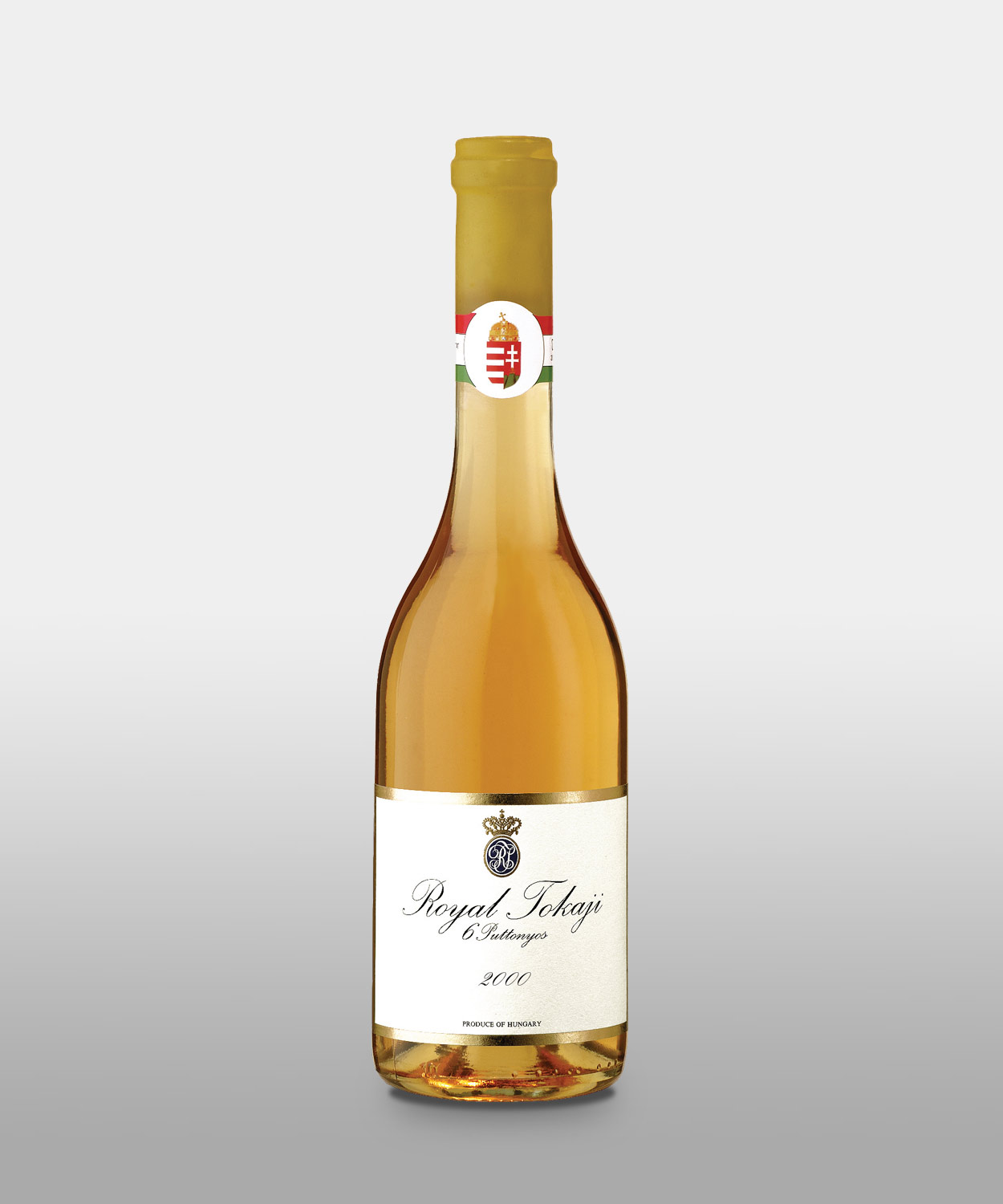Once the berries arrive at the winery, they are crushed, and the syrupy aszú paste is added to each gonci (140-liter/37-gallon barrel) of base wine. The mixture is stirred repeatedly for two or more days to extract the natural sugars and aromas of the paste. The small casks are then stored in RTWC’s 13th century cellars, originally dug out in defense against Turkish invaders. Here, along the moss-and mold-covered walls, is where a second fermentation takes place – a process that is caused by the addition of the aszú paste and one that can take several months to several years, due to the cold cellar temperatures and the high sugar content of the wine.

GOLD LABEL TOKAJI ASZÚ 6 PUTTONYOS 2000
The millennium magic also shone on Tokaj. We have never witnessed two great consecutive vintages as the 1999 and 2000. Winter was quite short and blossoming started very early. There was very hot and dry weather during the whole summer. Ripening started by the middle of August for the Muscat and beginning of September for Furmint and Hárslevelu. Thanks for these extreme conditions berries were fully ripen by the time shrivelling started. Three quarter of the aszú berries had more than 70 % sugar level, which is extremely high. Berries had excellent aroma with relatively low acidity but wines have been charming since the first time they were tasted. Wines made in this vintage are really elegant with a nice balance and lovely aromas. Wines are very smooth with great complexity and long lasting finish. Following the extraordinary 1999 vintage, the beautifully elegant 2000 shows just how difficult and different it continues to be to produce these wines on a year to year basis.
Cukor
209 g/l
Sav
10.9 g/l
Palackozás ideje
2006 August
Évjárat
2000